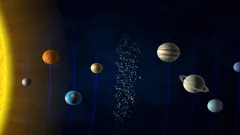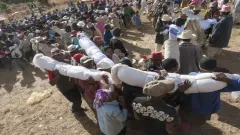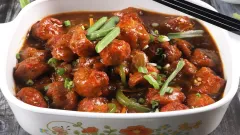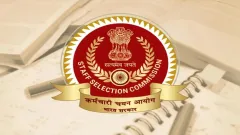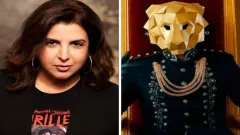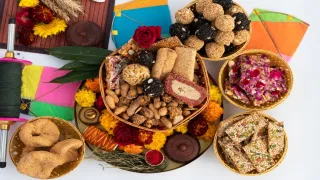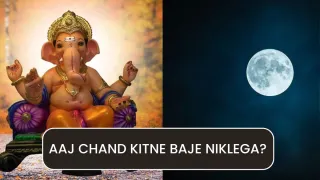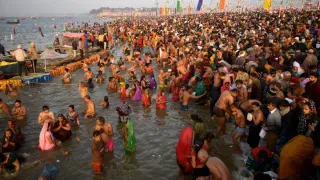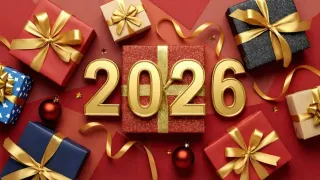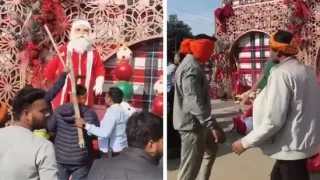Diwali, also known as Deepavali, is one of the most celebrated festivals in India and across the globe. Marked by vibrant festivities, this five-day festival commemorates the triumph of light over darkness and good over evil. Diwali, often referred to as the "Festival of Lights," is celebrated with immense zeal by Hindus, Sikhs, Jains, and Buddhists alike. Its significance transcends religious lines, uniting people in joyous celebrations of life, prosperity, and togetherness.
Did you know that many believe Lord Vishnu and Goddess Lakshmi got married on Diwali, a no-moon day (Amavasya)? The festival has rich legends tied to it and continues to bring people together through its rituals, grandeur, and mouth-watering traditional food. Read on to learn more about the history, legends, and auspicious times for Diwali Puja in 2024.
Diwali 2024: Date and Time

Image Source: Twitter
Diwali is a five-day celebration that begins with Dhanteras and concludes with Bhai Dooj. In 2024, Diwali will be celebrated from October 29 to November 3, with each day holding its significance:
- Dhanteras - October 29, 2024
- Kali Chaudas - October 30, 2024
- Narak Chaturdashi (Chhoti Diwali) - October 31, 2024
- Diwali (Lakshmi Puja) - November 1, 2024
- Govardhan Puja - November 2, 2024
- Bhai Dooj - November 3, 2024
Lakshmi Puja Muhurat
On November 1, 2024, Lakshmi Puja, the most significant Diwali event, will occur. The auspicious muhurat for Lakshmi Puja will be between 5:36 PM and 6:16 PM. This time is critical as it falls within the Amavasya Tithi, a favourable time to invoke the blessings of Goddess Lakshmi, the deity of wealth and prosperity. The Amavasya Tithi will start on October 31 at 3:52 PM and end on November 1 at 6:16 PM.
History and Significance of Diwali
The origins of Diwali date back thousands of years, and its history is intertwined with many Hindu legends. Most notably, the festival is rooted in the epic Ramayana. It celebrates the return of Lord Rama, Goddess Sita, and Lord Lakshmana to Ayodhya after 14 years of exile. The story narrates how Lord Rama defeated the demon king Ravana with the help of Lord Hanuman and the Vanar Sena. The citizens of Ayodhya lit thousands of diyas (oil lamps) to illuminate the path of their beloved king and queen as they returned home. This is why light plays such a central role in Diwali.
Other Legends Associated with Diwali
In South India, Diwali is celebrated as the day when Lord Krishna defeated the demon Narakasura. This event is marked by the burning of effigies and fireworks, symbolizing the victory of good over evil.
Another popular belief is that Lord Vishnu and Goddess Lakshmi got married on Diwali, so the day is considered highly auspicious for performing Lakshmi Puja, seeking her blessings for prosperity and well-being.
Regardless of the legend, Diwali is a time to celebrate the victory of righteousness, seek blessings, and engage in acts of goodwill.
Traditional Food Prepared on Diwali

Image Source: Twitter
Apart from lights and rituals, food plays a central role in Diwali celebrations. Each region has its delicacies that reflect its cultural heritage. Here are some of the traditional foods that are prepared during Diwali:
Also Read: Valmiki Jayanti 2024 Date, History, Mystery related to the name, Why is it celebrated
Sweets (Mithai)
Sweets are synonymous with Diwali. Homes are filled with the sweet aromas of traditional mithai, which are offered to the deities during puja and exchanged among friends and family.
- Gulab Jamun: Soft, melt-in-your-mouth khoya balls fried and soaked in sugary syrup are a staple in every household. These are some of the most commonly exchanged sweets during Diwali.
- Kaju Katli: A delicate sweet made from cashew nuts, sugar, and cardamom, often shaped into diamond-like pieces.
- Ladoo: There are several types of ladoos made during Diwali, including besan, motichoor, and rava ladoos. These are an all-time favourite during this festival.
Snacks (Namkeen)
In many households, various savoury snacks are prepared to accompany the sweets.
- Sev Puri & Golgappa: Popular street foods such as sev puri and golgappa (pani puri) are often prepared at home for family gatherings during Diwali.
- Dhokla & Khaman: These soft and spongy snacks made from fermented gram flour are typical of Gujarati households during the festivities.
Main Course Delicacies
While sweets and snacks take the limelight, traditional Diwali meals are equally grand.
- Puri & Sabzi: This is a staple meal during Diwali, especially in North India. Fluffy puris are served with sabzi (vegetable curry) made without onions and garlic to honour religious traditions. Common options include aloo sabzi, chana masala, and more.
- Neyyappam & Adhirasam: In South India, these are two must-have dishes. Neyyappam is a deep-fried sweet pancake made of jaggery, rice flour, and coconut, while Adhirasam is a disc-shaped sweet with similar ingredients but a chewier texture.
Beverages
Festive beverages are another important part of Diwali feasts. Though alcohol is generally avoided, households prepare a variety of non-alcoholic beverages.
- Masala Tea: Many people serve specially brewed tea flavoured with Indian spices like cardamom, cinnamon, and ginger.
- Thandai & Falooda: These cold drinks, made from milk and infused with rose water, saffron, and almonds, are served to guests during Diwali gatherings.
Pakoras
Fritters from lentils, vegetables, and paneer are popular snack choices. They are crispy, golden, and perfect for sharing with friends and family.
Also Read: Diwali 2024: Offer Goddess Lakshmi her favourite foods this Diwali
Regional Variations in Food
Diwali foods vary greatly depending on the region, but the unifying theme is indulgence and the joy of sharing. Each dish is prepared with care, and it is considered auspicious to offer the first serving to the gods before serving the family.
Diwali Celebrations Across India

Image Source: Twitter
North India
In North India, homes are decorated with bright lights, and the streets are adorned with lanterns. Families clean their homes, shop for new clothes, jewellery, and utensils, and perform Lakshmi Puja in the evening. Fireworks light up the sky after the puja.
South India
In South India, Diwali is celebrated a day earlier than in North India. People wake up early, take an oil bath, and wear new clothes. The day is celebrated with family gatherings and special feasts; fireworks are a common sight.
Western India
In Western India, Diwali is celebrated with the Dhanteras festival, where people buy gold and silver. In Gujarat, people decorate their homes with rangolis and light diyas to welcome Goddess Lakshmi. The region is known for its vibrant celebrations.
Eastern India
In Eastern India, particularly in West Bengal, people celebrate Kali Puja on the same night as Diwali. This festival honours Goddess Kali, with elaborate decorations, prayers, and traditional food. People also enjoy special sweets during this time.
Also Read: October month festivals 2024: दशहरा, दिवाली कब है? आने वाले महीने में हिंदू त्यौहारों की सूची




